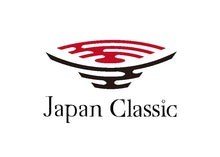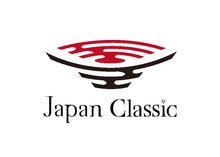Why Japanese Bowls Are the Quiet Luxury Your Table’s Missing
These aren’t just bowls; they’re design statements
Imagine you’re setting the table for a special meal. You want it to feel calm, beautiful, and full of meaning, something more than just plates and spoons. Maybe you’ve seen photos of simple, elegant Japanese bowls and wondered, What makes these pieces so different? Why do top restaurants and collectors around the world choose Japanese ceramic bowls for their tables?
If you’re looking for tableware that’s more than just a dish, something that feels like art, tells a story, and brings a sense of quiet luxury, Japanese bowls might be exactly what you’re missing.
The Secret Beauty of Japanese Bowls: More Than Just Tableware
Handmade ceramic bowls are not just for eating. Each one is a small work of art, shaped by hand and tradition. When you pick up a handmade ceramic bowl from Japan, you’re holding centuries of history, care, and craftsmanship.
Unlike mass-produced dishes, every Japanese bowl is unique. You can see small differences in the glaze, the shape, and the feel of the surface. These are not mistakes; they are part of the Japanese idea of wabi-sabi, which means finding beauty in things that are a little imperfect or different. This makes each bowl special, like it has its own personality.
Why Do Japanese Bowls Feel So Different?
A Story in Every Bowl
Japanese bowls come from a tradition that goes back thousands of years. Potters in Japan use local clay, natural glazes, and special firing techniques passed down through generations. Each region in Japan has its own style, like the earthy look of Bizen ware or the bright colors of Kutani pottery.
Made by Hand, Not by Machine
Most Japanese bowls are still made by skilled artisans, not machines. This means every piece is a little bit different. When you use one, you can feel the care and attention that went into making it. It’s like having a piece of someone’s story at your table.
Designed for Everyday Use
Japanese bowls are made to be used, not just admired. They are strong, easy to hold, and come in shapes that fit perfectly in your hand. Whether you’re eating rice, soup, noodles, or even cereal, there’s a Japanese bowl that’s just right for the job.
How Japanese Bowls Make Every Meal Feel Special
1. The Right Bowl for Every Dish
In Japan, there’s a bowl for everything:
• Rice Bowls (Gohan-chawan): Small, rounded, easy to hold, perfect for rice or snacks.
• Soup Bowls (Wan): Often lacquered, sometimes with lids to keep soup war.
• Ramen Bowls (Ramen-bachi): Large and deep, with wide openings for noodles and broth.
• Matcha Bowls (Chawan): Wide and flat-bottomed, made for whisking green tea.
• Soy Bowls: Tiny and shallow, just right for dipping sauces.
But you don’t need to follow strict rules. Many people use these bowls for all kinds of foods, salads, desserts, and even as a small serving bowl for guests.
2. Quiet Luxury: What Does It Mean?
Quiet luxury is about enjoying things that are simple, well-made, and timeless. Japanese bowls fit this idea perfectly. They don’t shout for attention, but they make every meal feel more thoughtful and calm. The smooth glaze, the weight in your hand, the gentle curves—these details turn an ordinary meal into a special moment.
3. A Touch of Nature at Your Table
Japanese ceramics are deeply connected to nature. The clay comes from the earth, the glazes use natural minerals, and the shapes often reflect stones, water, or plants. When you eat from a handmade Japanese ceramic bowl, you feel closer to the natural world.
The Journey of a Japanese Bowl: From Clay to Table
1. Finding the Right Clay
Japanese potters choose clay from local areas. Each type of clay has its own color and texture, which gives every bowl a unique look.
2. Shaping by Hand
Artisans shape the bowls by hand or on a potter’s wheel. You can often see the marks of their fingers or tools, which adds to the bowl’s character.
3. Glazing and Firing
The glaze gives the bowl its color and shine. Some glazes are smooth and glossy; others are rough and matte. The bowls are then fired in special kilns, sometimes using wood or gas, which can create beautiful, one-of-a-kind patterns on the surface.
4. The Final Touch
After firing, each bowl is checked by hand. Only the best pieces make it to your table. This careful process means you get a bowl that’s both beautiful and strong.
Why Top Restaurants and Collectors Love Japanese Bowls
Japanese bowls are a favorite for design-conscious collectors, upscale restaurants, and anyone who wants their table to feel special. Here’s why:
• Authenticity: Each bowl is made using traditional methods, so you know it’s the real thing.
• Versatility: Perfect for both home and restaurant use, from serving rice to displaying fruit or desserts.
• Durability: Handmade ceramics are strong and made to last, even with daily use.
• Aesthetic Appeal: The simple, elegant designs fit any style, from modern to classic.
• Cultural Value: Owning a Japanese bowl connects you to a long history of art and tradition.
Japanese Bowls for Modern Living: Tradition Meets Today
Blending Old and New
Japanese serving bowls are not stuck in the past. Many young artists in Japan are creating new designs that mix old techniques with modern styles. This means you can find bowls that match any home, whether you like classic or contemporary looks.
Eco-Friendly and Sustainable
With more people caring about the environment, Japanese ceramics are a smart choice. They are made from natural materials and last for years, making them a better option than plastic or disposable dishes.
How People Around the World Enjoy Japanese Bowls
• Home Cooks: Many home cooks love using Japanese small ceramic bowl dinnerware for everyday meals. The bowls make even simple dishes feel special.
• Restaurants: Upscale restaurants in the US and worldwide use handmade Japanese ceramics to serve sushi, ramen, and desserts. The bowls help create a unique dining experience for guests.
• Collectors: Art lovers collect traditional Japanese ceramics for their beauty and history. Some pieces are even displayed in museums.
• Gift Givers: Because each bowl is unique, they make thoughtful gifts for weddings, birthdays, or housewarmings.
Common Questions About Japanese Bowls
What makes Japanese bowls different from other bowls?
Japanese bowls are usually handmade, with unique shapes and glazes. They are designed for both beauty and function, and each one tells a story of tradition and craftsmanship.
Are Japanese bowls only for Japanese food?
No! You can use them for any kind of food- rice, soup, salad, cereal, or even as a small serving bowl for snacks or desserts.
Are handmade Japanese bowls strong enough for daily use?
Yes. Most handmade ceramics from Japan are fired at high temperatures, making them durable and safe for everyday meals.
How do I care for Japanese ceramic bowls?
Wash by hand with gentle soap and avoid sudden temperature changes. Hand washing is recommended for all bowls from Japan Classic Shop to preserve their finish and craftsmanship.
Why do restaurants choose Japanese bowls?
Restaurants love Japanese bowls because they are beautiful, durable, and help create a memorable dining experience. The bowls also show respect for the food and the guest.
For those interested in unique designs, the Oribe Double-Eared Striped Round Bowl is a great example of made-in-Japan bowls that blend tradition with modern flair.
Conclusion: The Quiet Power of Japanese Bowls
Japanese bowls at Japan Classic are more than just dishes; they are a way to bring calm, beauty, and meaning into your daily life. Whether you’re a home cook, a restaurant owner, or a collector, these bowls offer a quiet kind of luxury that never goes out of style.
By choosing handmade Japanese ceramics, you’re not just buying tableware. You’re bringing a piece of history, art, and culture to your table. And that’s something truly special.




Leave a comment